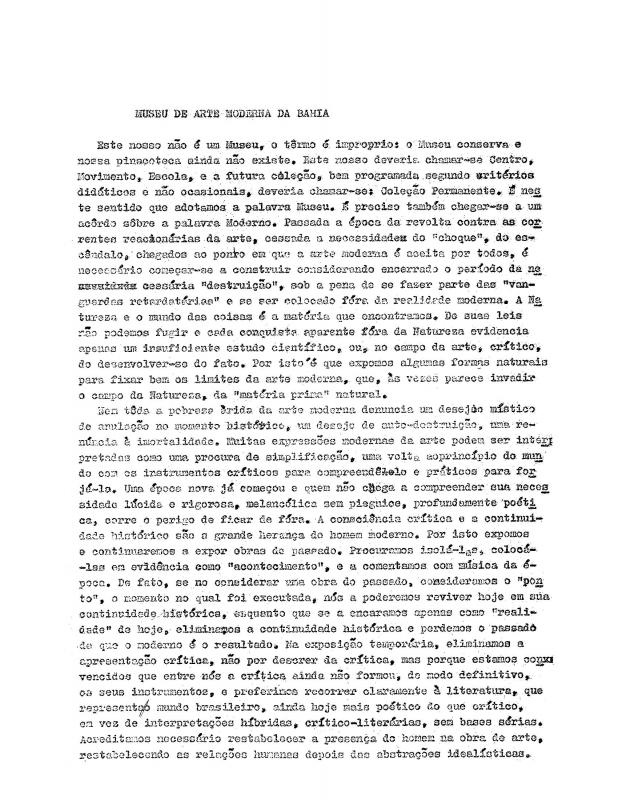It is highly likely that this wall text for “As exposições de pintura basileira” was written by Lina Bo Bardi (née Achillina Bo, 1914–92), an architect who served as the director of the Museu de Arte Moderna da Bahia (MAMB). The text expresses concern with finding the point of contact between Brazilian popular and high culture, one of the principles that guided her work as the head of the museum.
In the early fifties, Lina Bo Bardi, who had immigrated to Brazil from Italy after World War II, directed the art magazine Habitat, published by the Museu de Arte de São Paulo (MASP). In 1951, she, and her husband Pietro Maria Bardi (1900–99), who was the curator and director of MASP, began at the museum the industrial design department Instituto de Arte Contemporânea (IAC), where she taught. She lived in Salvador, Bahia, from 1959 to 1964, the years that she directed MAMB. Her work as the head of programming and education at MASP, and later as the director of MAMB, demonstrate her commitment to art historical exhibitions. She was also responsible for organizing exhibitions with a wide range of contemporary artists from Brazil and beyond, and for efforts that placed emphasis on popular culture from northeastern Brazil.
Bo Bardi advocated organizing courses in art, music, cinema, and theater, and workshops in industrial design and crafts. Her work energized the art scene from this region of Brazil and allowed local artists to come into contact with major figures in contemporary art. In 1963, the Museu de Arte Popular was opened with work from different regions of the country.
For related texts, see Lina Bo Bardi’s “O Museu de Arte Moderna da Bahia” [doc. no. 1110860]; “Um dos mais importantes acontecimentos culturais dos últimos tempos” [doc. no. 1110870]; and “Formas como escultura” [doc. no. 1110858].
For additional information, see Lina Bo Bardi’s “O Instituto de Arte Contemporânea surge…”, informational pamphlet, c. 1950, and “O Museu de Arte Moderna,” Diário de Notícias, Salvador, October 18, 1959; Glauber Rocha’s “MAMB Não é Museu: é Escola e Movimento. Por uma Arte Que Não Seja Desligada do Homem,” September 21, 1960; and Jacob Ruchti’s “Instituto de Arte Contemporânea,” HABITAT no. 3 (1951).



